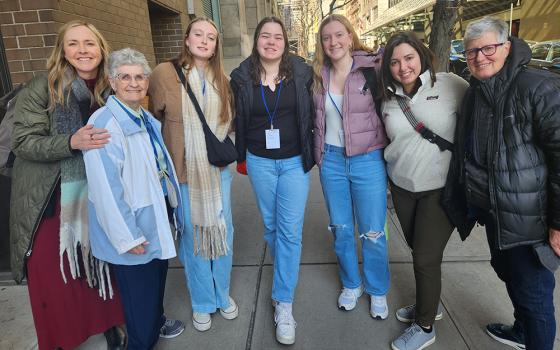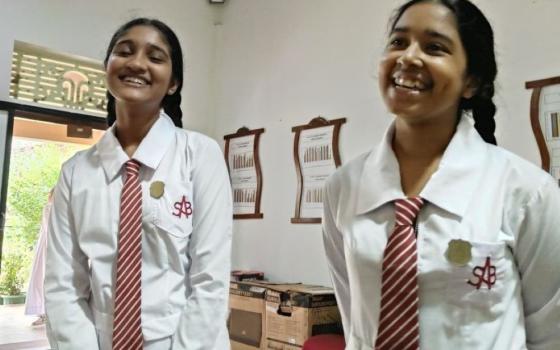On this day we celebrate the feast of St. James the Greater, Apostle.
James was a son of Zebedee and a brother of John. Jesus called James and John the Boanerges -- Sons of Thunder, perhaps referring to their powerful voices. They had been fishermen on the Sea of Galilee before leaving their father's boat and nets to follow Jesus.
Some authors say James is called the Greater because he was taller or older than James the Lesser, the brother of the Lord. Pope Benedict XVI said the "titles are certainly not intended to measure their holiness, but simply to state the different importance they receive in the writings of the New Testament and, in particular, in the setting of Jesus' earthly life."
--"James, the Greater," General Audience, June 21, 2006.
Along with Peter, James and John were the most important apostles. They were present when Jesus cured Peter's mother-in-law and when he raised the daughter of Jairus from the dead. They witnessed the Transfiguration.
James and John asked a favor of Jesus: "Allow us to sit one at your right hand and the other at your left in your glory." Jesus answered: "You do not know what you are asking. Are you able to drink the cup that I am to drink?" They said to him, "We are able." He said to them, "You will drink my cup, but to sit at my right hand and at my left is not mine to grant, but it is for those for whom it has been prepared by my Father." In the gospel of Matthew, read in today's Mass, it is the mother of the sons of Zebedee who makes the request.
--The Catholic Comparative New Testament, Oxford University Press, 2006. Search term: Zebedee.
St. James would be the first of the apostles to drink the cup. He was put to the sword by Herod Agrippa about the year 44.
Eight centuries later, the legend began that St. James had visited Spain before his martyrdom and that his remains were returned to Spain to be buried. The authenticity of the relics at Santiago de Compostela is doubted by many, but the site has been the goal of pilgrims for over a millennium. Those who complete the pilgrimage wear a scallop shell as a souvenir.
Click here for A Novena in Honor of St James the Apostle, by José Fernández Lago, Theological Canon of the Cathedral of Santiago de Compostela, and for an Introduction and Biography of St James by Sir Donald James Tilson, Ph.D., KCHS.
What to eat on St. James's Day? Coquilles St. Jacques. Many recipes for this dish are needlessly complicated. Here is a simple one.
There are countless guidebooks, but one that gets rave reviews from customers at Amazon is The Pilgrimage Road to Santiago: The Complete Cultural Handbook, by David M. Gitlitz, St. Martin's, 2000.
Click here for the web site of the Catedral de Santiago de Compostela. There is a reminder on the Cathedral page that Pope Leo XIII's apostolic letter, Deus Omnipotens, confirmed "the identify of St. James' relics". Similarly, Pope John Paul II, on his visits to Compostela, spoke of the "tomb of Saint James, the Apostle".
Click here for the Wikipedia article on the Way of St. James, the pilgrimage route to Santiago de Compostela, and here for the article on James, Son of Zebedee.
Click here for a YouTube video of Pope Benedict XVI's visit to Santiago de Compostela. The Pope is shown adding incense to the massive botafumeiro, praying before the tomb of St. James, and, at the end, wearing a pilgrim's cape with a scallop shell and a Cross of St. James on it.


